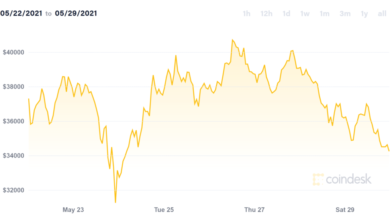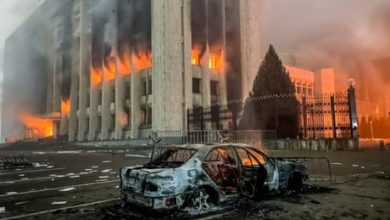The Afghanistan Crisis 2021: An Afghan Perspective

The U.S. President, Joe Biden, during his public address on 22nd August, asserted in a heartbeat that while the suffering of Afghans is “heart-breaking”, the U.S. decision to withdraw its troops from Afghanistan, was undoubtedly a “logical, rational and right decision to make”. Consequently, it is imperative, now more than ever, to amplify the voices of Afghans; to counteract the attempts of the U.S. at justifying the unjustifiable, and to understand the complexities of the current crisis in Afghanistan.
Source – theconversation.com
The Economic Transcript interviewed Nilab Ahmadi, a law graduate turned activist, policymaker for the betterment of human rights within the municipality of Amsterdam.
With her roots in Afghanistan’s Kandahar and Mazar-i-Sharif, Nilab, like most Afghans, has grown up with injustice forming the basis of her world view, which has given her a sense of morality and an unending drive to fight for human dignity regardless of where it is compromised in the world. The interview aimed to explore the role of media, international justice, public in the crisis, the goals of the Taliban and how they are using women and ethnic minorities to reach their goals.
Interviewee – Nilab Ahmadi, a law graduate, activist & policymaker
The Economic Transcript: How has the media contributed to the situation in Afghanistan?
Nilab: The role of the media is crucial; it is the only medium for most of us to understand what is going on in the world and why. The Vietnam war was called ‘the Television War’ because its negative coverage pushed viewers at home to revolt against the war, leading to massive protests and finally, its end.
Fast forward thirty years and reporting no longer lays bare the human sacrifice of a conflict that never should have happened at all. The media now legitimizes the war, a method used by governments to ensure popular support for intervention under the guise of women’s liberation and the threat of a ‘bad guy’. The innocent civilians that are bombed, disfigured, and tortured barely make it to the news, when they do, they are merely numbers. Through these methods, the suffering of Afghans has been met with extreme desensitization, these deaths have been treated as a necessity to achieve ‘an outcome’ that we were made to believe was worth it.
Finally, we see that the role the US has played in the total destruction of Afghanistan has been ignored by over 80% of media outlets, who focus on a symptom of the problem: the Taliban.
TET: How does International Justice interact with the powers that breach the standards for warfare and military intervention?
Nilab: The conflicts caused by the biggest military powers in the world have one thing in common: an almost insurmountable destruction of both human life and infrastructure. Countries are reduced to little more than rubble, hospitals, schools, entire villages, and important facilities for civilians are continuously targeted and destroyed, often with devastating consequences for the already vulnerable population.
International humanitarian law and justice are illusionary when the perpetrator at hand is the US. The destruction of civilian facilities is prohibited under humanitarian law, but even more strikingly, the prohibition of torture or inhumane and degrading treatment has the status of jus cogens, it is forbidden throughout the entire world and requires no legal scriptures for its application.
Yet, in both Iraq and Afghanistan, the CIA’s ‘black sites’ have been used as torture camps in which even civilians have been tortured to death. The prevalence of abuse and neglect of international standards has been enacted at all levels of governance, from the very top to the soldiers at the bottom, and most of them have gone unpunished.
This has sent a strong message to both the world and the Afghan population; Afghanistan is a place of lawlessness, where no act is too heinous to go unpunished. It has attracted terrorists and foreign governments such as Pakistan, who have continued facilitating bloodshed among the population in a geopolitical game that makes Afghanistan seem disconnected from the real world, a fictitious place that resembles a battle ground usually seen in games or movies.
These same governments have celebrated the fall of the Afghan government and enacted trade agreements with the Taliban to exploit the resources of one of the poorest countries in the world, knowing fully well that their acts will never be faced with consequences.
The institutions we have in place to ensure international justice are made up of the United Nations Security Council and the International Criminal Court. The paradox at play is that both these institutions are dependent on the funding and support of the same powers that commit war crimes and crimes against humanity at the largest scale.
In practice, we can see that these systems have been set up to ensure that exploitation and unjustified military intervention cannot be punished when the biggest powers in the world are at play, the UN Security Council is paralyzed by the system of veto power, and the International Criminal Court requires funding for its investigations, which requires it to navigate diplomatically and refrain from upsetting its biggest sources of funding, which again leaves the US unharmed.
Our system of international justice therefore reaffirms the position that the US has often shown it holds: a power immune to international prosecution. It was able to continuously repeal the efforts of the Security Council to intervene during the Vietnam War among others, and has refrained from ratifying the Rome Statute, leaving the ICC without a mandate to prosecute crimes committed by US forces. This covert immunity from prosecution has emboldened the US in its policies of destabilizing and intervening in other countries, with Afghanistan bearing the brunt of this behavior after 42 years of intervention.
TET: What role have citizens around the world played in enabling the atrocities taking place in Afghanistan?
Nilab: The public has forgotten its responsibility to influence government policies where military intervention is concerned now that Vietnam has become a thing of the past. Both activism and critical insight into policies should be used by the general public to prevent governments from abusing their power to exploit and oppress other nations. Especially now that the media no longer fulfills this role. By negating that fact, we have given our silent acquiescence for the world to rip Afghanistan to shreds.
TET: What are the goals of the Taliban?
Nilab: The Taliban’s ideology has been created by the combined efforts of the US, Saudi-Arabia, and Pakistan. It is a Wahhabi version of Deobandi Islam that prescribes an Islamic State and governance under what they consider to be Sharia law. The influence of foreign powers is reflected in Taliban policies. Pakistan has played one of the most disruptive roles apart from the US, with several objectives in mind: an Islamic government rather than an Afghan nationalist government to act in Pakistan’s interest within the region. The Durand Line, a disputed border between Afghanistan and Pakistan, has caused tensions between the two nations, as well as Afghanistan’s historic friendship with India, with whom Pakistan shares a border dispute as well.
The Taliban and Pakistan have more in common than the Taliban has with Afghanistan, where it deploys a policy of terror and total cultural genocide among even its own ethnic population. This policy seems to be geared towards sustaining power and oppressing the population, whose identity is erased and replaced by an oppressive Islamic regime that should be more in line with its Islamic neighbor Pakistan.
The Taliban act under a pretence of establishing an Islamic Emirate governed by Sharia law, but their behavior has contradicted these norms continuously, exposing that their true policies are geared towards interests found elsewhere. Their policies are enacted by the Pakistani State, whose true interests are served through the reign of the Taliban.
Source – theconversation.com
TET: How have the Taliban turned women and ethnic minorities into tools for reaching their goals?
Nilab: The Taliban have singled out the biggest threats towards their oppressive regime by targeting ethnic groups and women.
Afghanistan has a strong presence of patriarchal norms that have long disrupted the progression of its society. Those who suffered most because of this have also fought most valiantly against these systems: women and the ethnic Hazara population native to Afghanistan.
They have both suffered the worst forms of oppression and ethnic cleansing under the Taliban regime. The Taliban retain power by eliminating the voices of the most likely opponents against their regime. The Hazara’s stand out for being a Shi’a minority, as well as their dedication towards becoming educated and paving the way for women to progress through education and being employed in government.
Under Taliban rule, women are homebound and become invisible within society. They are prohibited from being seen, even through windows or on balconies, and their voices may not be heard in media nor outside. Education and work are both prohibited for women, nullifying any influence they could have within society.
Written by- Ashrika Paruthi
Edited by– Khyati Kallianpur





